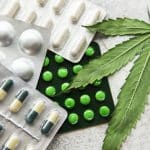Burnout among athletes is a real and prevalent issue. Being involved in sports is not just about physical conditioning. Often, the psychological aspects are overlooked, with many athletes facing overwhelming amounts of stress and pressure to perform. This comes from coaches, family members, fans, and even their own personal expectations. High levels of stress over an extended period can lead to burnout, an issue that severely affects an athlete’s mental and physical well-being. In this feature, we aim to discuss strategies for preventing and managing sports-related burnout among athletes, to enhance their overall performance and enjoy their sport for a long time.
Understanding Burnout in Athletes
Before we can jump into the prevention and management strategies, it’s crucial to understand what burnout is and how it manifests in athletes. Burnout is a psychological syndrome emerging as a prolonged response to chronic interpersonal stressors. In the context of sports, it represents a state of physical, emotional, and mental exhaustion caused by long-term involvement in emotionally demanding situations.
In the same genre : What impact do sports have on national identity and patriotism?
It’s not just about the lack of motivation or feeling tired. Burnout in athletes can result in negative attitudes towards the sport, reduced performance, and even severe mental health issues such as anxiety and depression.
The telltale signs of burnout among athletes include a significant drop in performance, lack of enthusiasm about training or competition, difficulties in regular communication, frequent injuries, and significant changes in appetite and sleep patterns. The role of coaches in identifying and addressing these symptoms is pivotal.
Additional reading : The evolution of sports gear: technology meets performance
Prevention Strategies
To ensure athletes continue to perform at their best and enjoy their sport, proactive measures need to be taken to prevent burnout. It’s about building a healthy sports culture that values mental health and recovery time just as much as it does athletic performance and achievements.
Balanced Training and Recovery
One of the key aspects of preventing burnout in athletes is ensuring a balanced approach to training. This includes varied training programs that prevent monotony and overtraining. Athletes should also be encouraged to take regular breaks and recovery periods.
Coaches can help by structuring training programs that are challenging yet achievable, taking into account the athlete’s physical condition and mental state. Recovery sessions should also be incorporated into the training program. It’s essential to understand that recovery is not just about physical rest but also includes mental relaxation and stress management.
Importance of Communication
Open and frequent communication between athletes and their coaches, teammates, and parents can significantly reduce the risk of burnout. Athletes should feel comfortable expressing their feelings, concerns, and needs without fear of judgment or repercussions.
Coaches should regularly check in with athletes, not just about their performance and training, but also their overall well-being. Teammates can also play an essential role in providing social support. A supportive and understanding atmosphere can go a long way in preventing burnout.
Managing Burnout
Even with prevention strategies in place, dealing with burnout once it has occurred is a different challenge. However, it is still manageable and the athlete can recover to their peak performance with the right approach.
Recognizing and Acknowledging Burnout
The first step in managing burnout is recognizing and acknowledging its existence. Coaches should be trained to identify the signs of burnout and approach the athlete in a supportive and non-judgmental manner. Athletes, too, need to be aware of the signs of burnout and not be afraid to seek help when they identify these signs in themselves.
Seeking Professional Help
In cases where burnout has resulted in severe mental health issues such as depression or anxiety, it’s crucial to seek professional help. Psychologists and psychiatrists who specialize in sports psychology can provide the necessary treatment, which may include psychotherapy or medication.
Implementing a Holistic Recovery Plan
Recovering from burnout is not just about taking a break from the sport. A holistic recovery plan should be implemented, focusing on both physical and mental recovery. This can include reduced training load, mindfulness exercises, stress management techniques, and proper nutrition.
In conclusion, burnout in athletes is a critical issue that needs more attention. It’s about creating a sports culture that values mental well-being just as much as athletic performance. By understanding, preventing, and managing burnout, we can ensure that athletes continue to enjoy their sport and perform at their best for a long time.
The Role of Research in Preventing and Managing Athlete Burnout
Research plays a fundamental role in understanding, preventing and managing athlete burnout. Numerous studies have been conducted and published in reputable databases such as Google Scholar, PubMed, Crossref, and others. These cover various aspects of athlete burnout from its causes, signs, and effects to strategies of prevention and management.
For instance, a Google Scholar article on athlete burnout might detail the latest findings on its physiological and psychological effects, while a PubMed Crossref piece might focus on the role of the coach-athlete relationship in preventing burnout. Each of these resources provides invaluable insights that can inform preventative strategies and management approaches.
In-depth analysis and peer-reviewed articles from these databases contribute to a comprehensive understanding of burnout in athletes. By referencing Psychol DOI and DOI Crossref, one can access in-depth research on the psychology of burnout, the importance of basic psychological needs and the impact of mental health on the performance of athletes.
With the information disseminated by these research platforms, coaches, parents, teammates, and even the athletes themselves can find articles related to burnout. These resources provide science-backed strategies to prevent burnout and maintain the mental health of athletes, thus supporting their overall performance and longevity in their respective sports.
Technology’s Impact on Preventing and Managing Burnout
In the modern age, technology has become increasingly important in the field of sports, offering tools and platforms that can help prevent and manage burnout in athletes.
Online platforms offer a wealth of resources, from articles on Sport Exerc Psychol to advanced tools for tracking performance and stress levels. For instance, student athletes can use fitness trackers to monitor their training intensity and recovery periods. These data can be analyzed to prevent overtraining, a common cause of burnout.
Additionally, technology provides platforms for communication, allowing for improved coach-athlete and athlete-athlete interactions. These platforms can facilitate open discussions about training, performance, and well-being, contributing to a more supportive and understanding sports culture.
Moreover, technology has enabled greater access to mental health resources. Online counselling and mindfulness apps can support athletes in managing stress and maintaining their mental health. Young athletes in particular may benefit from these resources, as they navigate the pressures of competitive sports while still developing their coping mechanisms.
Conclusion
In conclusion, preventing and managing sports-related burnout among athletes is a multi-faceted endeavor that involves understanding the complex nature of burnout, implementing preventive strategies, managing burnout when it does occur, and utilizing technological and research resources. It requires a significant shift in sports culture to prioritize mental health and well-being, thereby ensuring athletes continue to perform at their best.
The information found on platforms such as Google Scholar, Crossref and others, are instrumental in informing these strategies. Technology also plays an essential role by providing tools for tracking training, facilitating communication and supporting mental health.
Ultimately, the goal is to create a sporting environment where athletes are not just physically fit, but mentally resilient. This will enable them to enjoy their sport, perform optimally, and prevent the risk of burnout, contributing to healthier, happier and more successful athletes.











